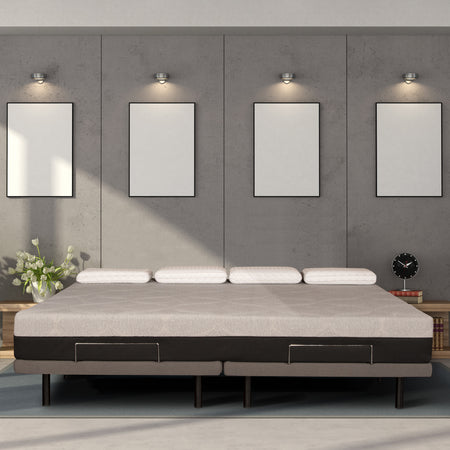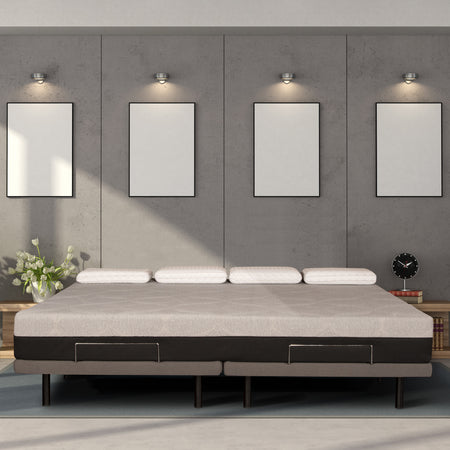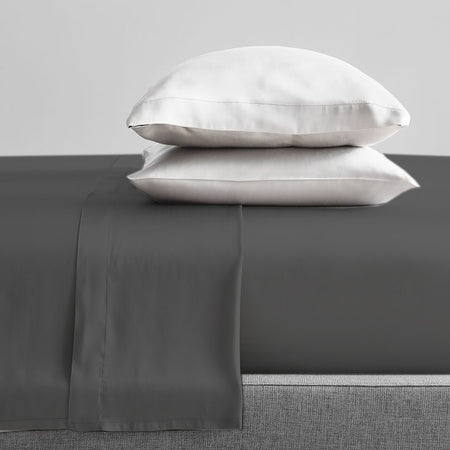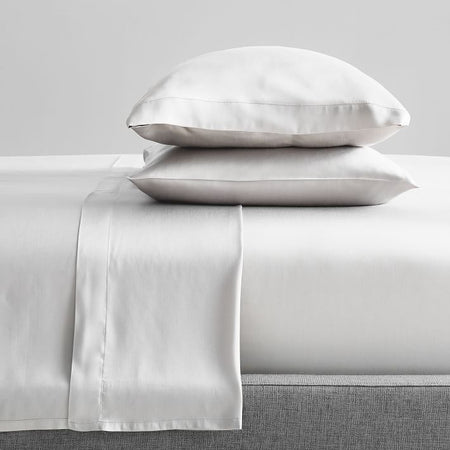Who knew? I bet most of us had an inkling but exactly which plants are the best at helping you sleep and whyf? Which plants are easiest to take care of? And which plants will look the best in your bedroom? Let’s take a few moments to delve into this subject.

The Secret Life of Plants
We’re finding out more and more about the health benefits of plants. And yes, plants can help you sleep better. We’re even finding out some puzzling things about plants we didn’t think were possible. For example, we’ve known for a long time that playing classical music for our plants and talking to them helps them thrive.
Of course, the same can be said for our teenagers, but some teenagers talk back a lot. As it turns out, plants talk a lot, too – not so much to us but to each other. In fact, plants communicate with each other and work together all the time.
One of the most surprising findings is that plants under stress from harmful insects send out chemical messages through the air to warn other plants. Some plants also communicate with their offspring and siblings – and not just at Thanksgiving dinner.
Ideal Oxygen Levels
As we learned during the pandemic, the level of oxygen in our blood is a crucial indicator of health. A normal level of blood oxygen saturation is above 95%. Anything below 90% is severely harmful. Maintaining a healthy oxygen saturation in our bodies is even more important when we sleep.
Sleep apnea can drastically reduce the amount of oxygen our bodies absorb. You don’t even have to have full-blown sleep apnea to experience a negative effect on your sleep. Even slight reductions in blood oxygen can rob our bodies of restorative sleep.
NASA Top 10 Air Purifying Plants

To help keep astronauts healthy in space, NASA has conducted extensive research with plants to determine which plants can help purify the air. Here are the top 12:
- Areca palm (Dypsis lutescens – also known as bamboo palm, butterfly palm, and cane palm) An Areca Palm helps purify the air by reducing harmful chemicals like formaldehyde, toluene, and xylene. Regular watering and moderate sunlight will help it thrive.
- Snake plant (Dracaena trifasciata – also known as Saint George’s sword and mother-in-law’s tongue) This plant helps oxygen levels by exchanging oxygen and carbon dioxide through crassulacean acid metabolism. These plants are naturally drought resistant and have been known to always take the side of their grown child during family disagreements.
- Money plant (Epipremnum aureum – also known as pothos, golden pothos, and devil’s ivy) This plant excels at pulling harmful chemicals from the air. However, be careful. The money plant is known to be toxic to small children and pets, so be sure to keep them out of reach. One of the reasons it is called the devil’s ivy is because it’s practically impossible to kill off. Lucky for me, I’ve already tried and failed to keep our plant alive.
- Gerbera daisy (Gerbera jamesonii – also known as transvaal daisy and barberton daisy) This daisy is native to South Africa, and some believe it’s the most beautiful of the air-purifying bunch. It’s a clump-forming, stemless perennial. This easy-to-care-for daisy is renowned for its ability to produce high levels of oxygen while filtering out harmful compounds in the air. Keeping this on your bedside table will enable you to enjoy this extra oxygen while you sleep.
- Chinese evergreens (Aglaonema – varieties include names like Moonlight Bay, Diamond Bay, and Emerald Bay) originated in Southeast Asia, and they do an excellent job at supplying extra oxygen in the room.
- Spider plant (Chlorophytum comosum – also known as spider ivy and ribbon plant) This is a hanging plant it can grow to surprising lengths. Be wary of fluoride in the water as it can cause “burnt tips.” One way to avoid this is by letting a pitcher of water sit for a couple of days before using it to water your plant. This plant makes an excellent choice for people who don’t have a green thumb. It reduces the amount of carbon monoxide and xylene in the air.
- Aloe Vera (Aloe barbadensis – this plant originated from the south-eastern Arabian Peninsula and is now cultivated around the world) This plant thrives in the sun, so be sure to place it where your bedroom gets the most light or on a window sill.
- Broad lady palm (Rhapis excelsa – also known as broad leaf lady palm) Ammonia is commonly found in homes by way of cleaning sprays, and this plant is one of the few that can lower the levels of Ammonia. Since it thrives in humid areas, keep it well watered and or place one in the bathroom near the shower.
- Red-edged Dracaena (Dracaena marginata – also known as the Madagascar dragon tree) This plant can grow up to eight feet tall. You can have it on a nightstand and then, as it grows, replant it in a floor pot. Well-lit areas help it stay healthy. Trichloroehtylene is just one of the chemicals this plant reduces naturally.
- Weeping fig (Ficus benjamina – also known as a ficus tree) This is one of the most popular plants for the bedroom. It works diligently at reducing chemicals like formaldehyde and toluene. Place it in a well-lit corner of your bedroom.

Photogenic Photo Synthesis
If you’ve purchased or sold a home recently, then you’re already familiar with how important plants are to interior design. The most beautiful homes are staged with an abundance of house plants. It’s one of the subtle but important design cues we might not notice right away, but it creates a welcoming sense of peace and tranquility.
Creating a plant-rich environment isn’t just about aesthetics; it can help keep us calm and lower our heart rate.
Why Peace Lilies Are So Important
This indoor plant is so beneficial to our sleep environment that deserves special mention. Inferior furniture, in general, and lower-quality bed frames, in particular, often contain particleboard, fiberboard, and adhesives that contain formaldehyde. This harsh chemical is known to cause cancer. Peace Lillies are excellent at reducing the levels in the air.
Consult a Sleep Expert
Good quality sleep is essential to our physical and emotional well-being. Yet, it’s tempting to cut back where you can when it comes to bedroom furniture because not many visitors see it.
Thankfully, the more we find out about the restorative benefits of sleep, the more attention we pay to things like circadian rhythms and creating bedroom environments that promote staying asleep long enough to benefit. Consult a sleep expert about what sort of mattress, bedding, and bedroom design will help you get the most from your time to sleep.






















